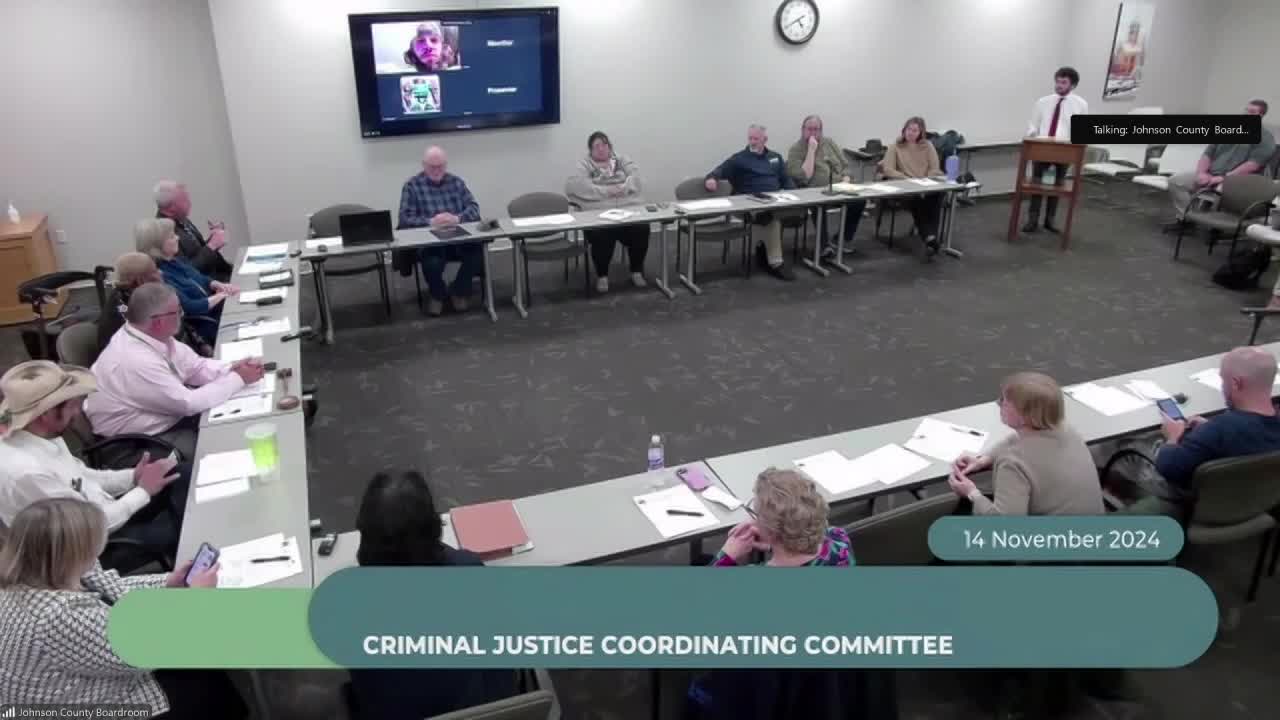Community debates costly jail construction amid mental health concerns
November 14, 2024 | Johnson County, Iowa
This article was created by AI summarizing key points discussed. AI makes mistakes, so for full details and context, please refer to the video of the full meeting. Please report any errors so we can fix them. Report an error »

During a recent government meeting, officials engaged in a robust discussion regarding the construction and funding of a new jail facility, emphasizing the financial implications and community needs surrounding incarceration. The architect's estimate pegged construction costs at approximately $750 per square foot, prompting concerns about the escalating expenses associated with additional space requirements.
One official raised the question of funding sources, inquiring whether options beyond bonds, such as donations or crowdfunding, could be viable. While acknowledging the legality of such alternatives, the consensus was that significant public enthusiasm for jail funding is unlikely, contrasting it with more popular causes like libraries or museums.
A notable theme throughout the meeting was the perspective on incarceration, particularly concerning mentally ill individuals. Several participants expressed a strong belief in the necessity of mental health diversion programs, arguing that many individuals do not belong in jail. They highlighted the importance of addressing mental health needs separately from the general inmate population to ensure safety and appropriate care.
Concerns were also raised about the potential for a new facility to lead to increased incarceration rates, with one official warning, \"if you build it, you will fill it.\" This sentiment was echoed by others who noted that the jail population had decreased during the COVID-19 pandemic without a corresponding rise in crime, suggesting that alternatives to incarceration might be more effective in addressing community safety.
The discussion also touched on the limited treatment options available for inmates, with calls for improved mental health and substance abuse services to break the cycle of recidivism. One participant pointed to successful initiatives in other regions, such as a public inebriate alternative program in Oklahoma City, which diverts individuals from jail to treatment services for minor offenses.
As the meeting concluded, there was a clear consensus among officials that the focus should shift from merely expanding jail capacity to exploring comprehensive solutions that address the root causes of crime, including affordable housing and access to mental health resources. The dialogue underscored a growing recognition of the need for a more humane and effective approach to criminal justice in the community.
One official raised the question of funding sources, inquiring whether options beyond bonds, such as donations or crowdfunding, could be viable. While acknowledging the legality of such alternatives, the consensus was that significant public enthusiasm for jail funding is unlikely, contrasting it with more popular causes like libraries or museums.
A notable theme throughout the meeting was the perspective on incarceration, particularly concerning mentally ill individuals. Several participants expressed a strong belief in the necessity of mental health diversion programs, arguing that many individuals do not belong in jail. They highlighted the importance of addressing mental health needs separately from the general inmate population to ensure safety and appropriate care.
Concerns were also raised about the potential for a new facility to lead to increased incarceration rates, with one official warning, \"if you build it, you will fill it.\" This sentiment was echoed by others who noted that the jail population had decreased during the COVID-19 pandemic without a corresponding rise in crime, suggesting that alternatives to incarceration might be more effective in addressing community safety.
The discussion also touched on the limited treatment options available for inmates, with calls for improved mental health and substance abuse services to break the cycle of recidivism. One participant pointed to successful initiatives in other regions, such as a public inebriate alternative program in Oklahoma City, which diverts individuals from jail to treatment services for minor offenses.
As the meeting concluded, there was a clear consensus among officials that the focus should shift from merely expanding jail capacity to exploring comprehensive solutions that address the root causes of crime, including affordable housing and access to mental health resources. The dialogue underscored a growing recognition of the need for a more humane and effective approach to criminal justice in the community.
View full meeting
This article is based on a recent meeting—watch the full video and explore the complete transcript for deeper insights into the discussion.
View full meeting
